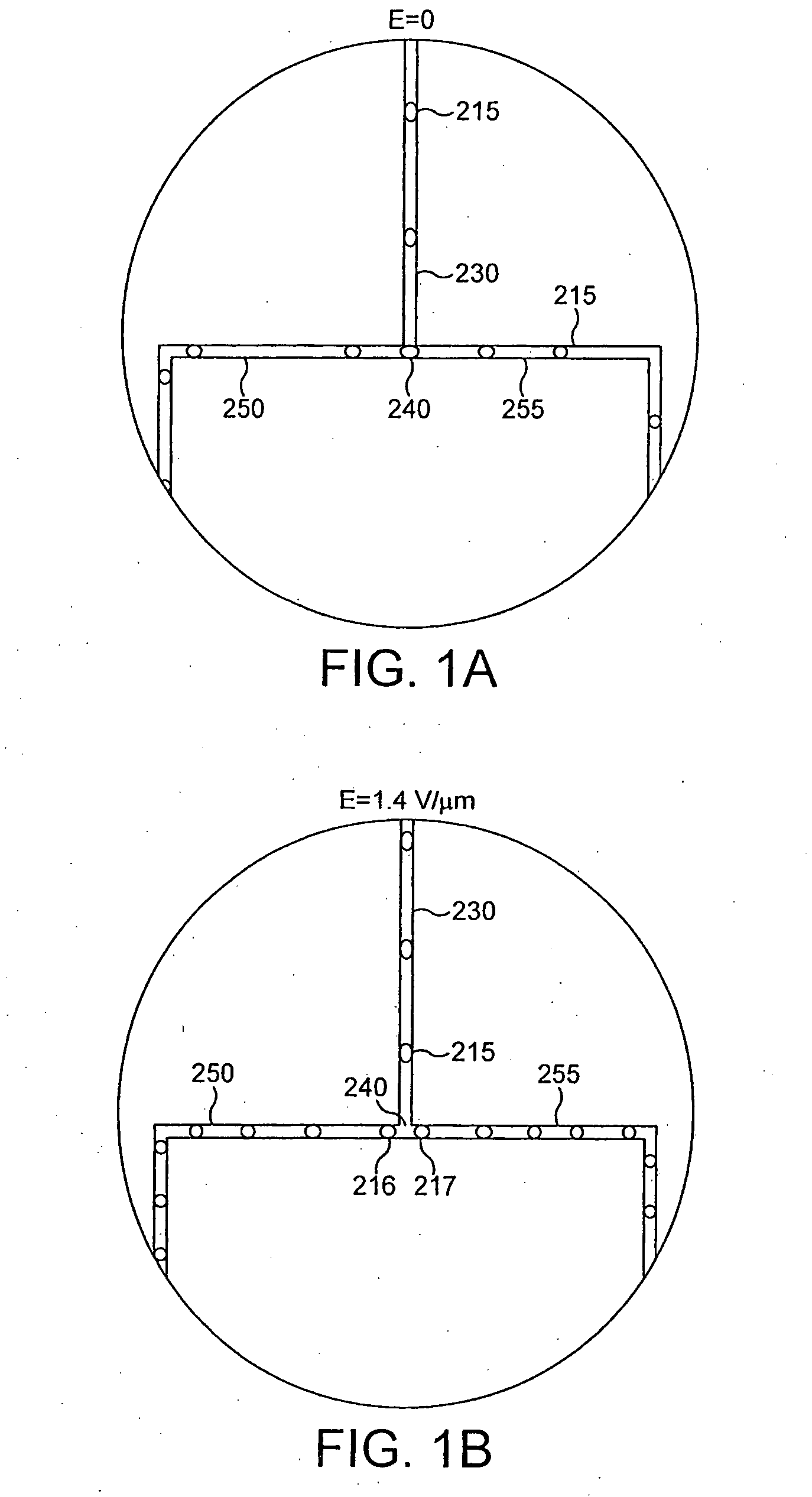Vitro evolution in microfluidic systems
a microfluidic system and microfluidic technology, applied in the field of microfluidic systems, can solve the problems of limited scope of the above-mentioned systems, limited library size allowed by phage display technology, and inability to direct select activities
- Summary
- Abstract
- Description
- Claims
- Application Information
AI Technical Summary
Benefits of technology
Problems solved by technology
Method used
Image
Examples
example 1
Microfluidic Device for Selection of Genes Using In Vitro Compartmentalisation
[0351]A schematic representation of the microfluidic device is shown in FIG. 15. Microchannels are fabricated with rectangular cross-sections using rapid prototyping in poly(dimethylsiloxane) (PDMS) (McDonald and whitesides, 2002) and rendered hydrophobic as (Song and Ismagilov, 2003). Syringe pumps were used to drive flows (Harvard Apparatus PHD 2000 Infusion pumps). For aqueous solutions, 250 μl Hamilton Gastight syringes (1700 series, TLL) with removeable needles of 27-gauge are used with 30-gauge Teflon tubing (Weico Wire and Cable). For the carrier fluid, 1 ml Hamilton Gastight syringes (1700 series, TLL) are used with 30-gauge Teflon needles with one hub from Hamilton (Song and Ismagilov, 2003). The carrier fluid is 9% (v / v) C6F11C2H4OH in perfluorodecaline (FD) (Song et al., 2003). The microfluidic device consists of a series of interconnected modules. Each module has a specific function. These incl...
example 2
Enrichment of lacZ Genes from a Pool of Mutant lacZ Genes Based on □-Galactosidase Activity Inside Aqueous Droplets in a Microfluidic Device
[0356]An example is given how single genes encoding enzymes with a desired activity can be selected from a pool of genes by making and manipulating aqueous droplets using the microfluidic device described in Example 1. It is demonstrated that lacZ genes encoding for active β-galactosidase enzyme can be selected from a pool of mutant lacZ genes by: (1) forming droplets containing (a) a coupled in vitro transcription / translation system and (b) genes; (2) fusing droplets (a) and (b) to initiate translation with the concentration of genes such that the majority of combined droplets (c) contain no more than one gene per droplet; (3) passing the combined droplets (c) down a microfluidic channel to allow translation; (4) fusing each droplet (c) with a droplet (d) which contains an inhibitor of translation (puromycin) and the fluorogenic substrate, fluo...
example 3
Mutants with Improved β-Galactosidase Activity can be Selected from a Random Mutagenesis Library of Evolved β-Galactosidase (Ebg) Using Compartmentalisation of Genes in Aqueous Droplets in a Microfluidic Device
[0366]The gene encoding for evolved-β-galactosidase (Ebg) is often used as a model to study the evolution of novel enzyme functions within an organism. The wild type ebgA gene of Escherichia coli encodes an enzyme with feeble β-galactosidase activity, but ebgA has the potential to evolve sufficient activity to replace the lacZ gene for growth on the sugars lactose and lactulose. Genetic analysis of these mutants has revealed that only two amino acid replacements account for the drastic increase in β-galactosidase activity.
[0367]Here we show that similar mutants can be obtained in vitro by creating a random mutagenesis library of the ebg gene and subjecting them to selection for β-galactosidase activity by making and manipulating aqueous droplets using the microfluidic device d...
PUM
| Property | Measurement | Unit |
|---|---|---|
| diameter | aaaaa | aaaaa |
| size | aaaaa | aaaaa |
| applied voltage | aaaaa | aaaaa |
Abstract
Description
Claims
Application Information
 Login to View More
Login to View More - R&D
- Intellectual Property
- Life Sciences
- Materials
- Tech Scout
- Unparalleled Data Quality
- Higher Quality Content
- 60% Fewer Hallucinations
Browse by: Latest US Patents, China's latest patents, Technical Efficacy Thesaurus, Application Domain, Technology Topic, Popular Technical Reports.
© 2025 PatSnap. All rights reserved.Legal|Privacy policy|Modern Slavery Act Transparency Statement|Sitemap|About US| Contact US: help@patsnap.com



